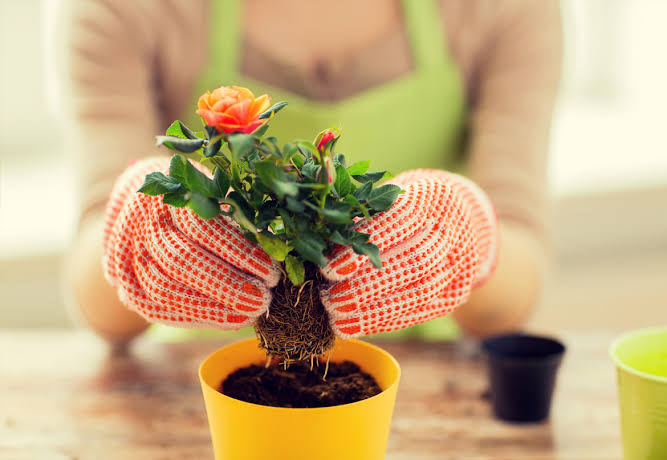Roses have long been the symbol of love, beauty, and elegance. But did you know that you don’t always need to buy a new rose plant from the nursery? With just a single cutting, you can grow a thriving rose bush in your own garden. Imagine telling your friends that the roses blooming in your backyard came from a single stem you propagated yourself—that’s guaranteed to impress!In this guide, we’ll walk through everything you need to know about how to plant a rose from a stem—from choosing the right cutting to ensuring it thrives into a beautiful, flowering plant. With the right tips and a little patience, this simple gardening project will leave you with a stunning display of roses for years to come.🌹 Why Grow Roses from Stems?Before diving into the process, let’s explore why propagating roses from cuttings is so popular:Affordable: Instead of buying new plants, you can multiply your existing roses.Satisfying: Watching a cutting grow into a full plant is rewarding.Preservation: Save heirloom roses or favorite varieties by creating clones.Gift Idea: A rose you’ve propagated makes a heartfelt, personal present.When you learn how to plant a rose from a stem, you’re not just gardening—you’re creating a living legacy.🛠️ Materials You’ll NeedTo get started, gather these simple supplies:Healthy rose plant (for cuttings)Sharp pruning shears or scissorsRooting hormone (powder or gel, optional but helpful)Small pot or container with drainage holesPotting mix (preferably a blend for roses or general-purpose soil with sand)A plastic bag or clear plastic bottle (to create a greenhouse effect)Watering can or spray bottle👌 Step-by-Step: How to Plant a Rose from a StemStep 1: Choose the Right StemSelect a healthy rose stem about 6–8 inches long.Ideally, pick a stem that has just finished blooming.Avoid stems that are too woody or too soft (new growth).Step 2: Make the CuttingUse sharp, clean pruning shears to cut the stem at a 45-degree angle.Remove flowers, buds, and lower leaves, leaving only the top two sets of leaves.This ensures the stem focuses energy on root growth rather than blooms.Step 3: Prepare the CuttingGently scrape the bottom inch of the stem to expose inner tissue—this helps root development.Dip the cut end into rooting hormone to encourage faster, stronger roots.Step 4: Plant the CuttingFill a small pot with moist potting mix.Insert the stem about 2–3 inches deep.Firm the soil gently around the cutting to hold it upright.Step 5: Create a Greenhouse EffectCover the cutting with a clear plastic bag or cut-off plastic bottle.This traps humidity and creates the ideal environment for root growth.Place the pot in a bright, indirect light location (avoid direct sunlight at this stage).Step 6: Care and PatienceKeep the soil consistently moist, but not soggy.Check for new growth after 4–8 weeks.Once roots are established, remove the plastic cover and gradually expose the cutting to more sunlight.🌟 Clever Tips for SuccessHere are pro tips to do it right the first time:Morning Cuttings Work BestTake your cuttings in the morning when the plant is fully hydrated.Sterilize ToolsPrevent disease by cleaning shears with rubbing alcohol before cutting.Warmth is KeyRoses root best in temperatures between 65–75°F (18–24°C).Multiple Cuttings Increase SuccessNot every cutting will take root, so plant several at once.Be PatientSome roses root quickly, others may take months—patience pays off.🎨 Creative Ways to Use Propagated RosesOnce your roses are thriving, here are fun ideas for enjoying them:Gift Potted Roses: Surprise friends and family with a plant you grew.Create a Rose Hedge: Line your garden with roses for a dramatic effect.Mix Varieties: Experiment with different colors and scents.Patio Planters: Grow propagated roses in decorative pots for a stylish outdoor look.🏡 Where to Plant Your Rose CuttingsWhen your rooted cuttings are ready for transplant, consider these spots:Garden Beds: Full sun, well-drained soil is best.Containers: Ideal for balconies or patios.Borders and Pathways: Adds beauty and fragrance where you walk.Arches or Trellises: Perfect for climbing rose varieties.❌ Common Mistakes to AvoidEven simple gardening projects have pitfalls—avoid these to succeed:Overwatering, which causes rot.Planting in direct, harsh sunlight too early.Using dull shears that crush stems instead of cutting cleanly.Forgetting to harden off rooted cuttings before transplanting outdoors.Expecting every cutting to root (success rates vary).🌿 Eco-Friendly Bonus IdeaWant to make the process even greener? Use organic rooting stimulants like honey, willow water, or aloe vera gel instead of synthetic rooting hormones. These natural alternatives encourage root growth while keeping things eco-friendly.ConclusionLearning how to plant a rose from a stem is simpler than most people think—and it’s a skill that will impress anyone who sees your flourishing garden. With just a single cutting, a bit of care, and some patience, you can create a brand-new rose plant that will bloom year after year.So grab your pruning shears, choose your favorite rose, and start propagating. Not only will you save money and grow your collection, but you’ll also enjoy the pride of saying: “I grew this rose from just a stem!” 🌹✨

